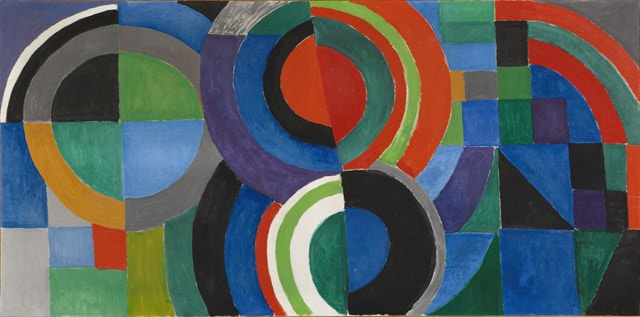n
“Amber dress, reflections caramel. The nose on the cooked red berries, the pit (core), and the vanilla is a prelude to a molten, elegant palace, skated by the time, when gets involved in aromas of malt, peat, wax, and always cooked fruits, before one finale which lets drill the rancio.”
Immediately images from the “Surrealist Manifesto” by Andre Breton started ping ponging inside my head. Aside from a seriously mangled translation, the description for the wine was somewhere between appalling and nonsense. It was also useless as far as our presentation was concerned despite the fact that the wine turned out to be delicious.
A tech sheet, if not familiar, is a single page document about a specific wine usually written by the winery or in some cases the importer or distributor. The sheet lists all the pertinent technical information about the wine including how and where the fruit was grown, how the wine made and aged, and potentially much more. Tech sheets are important. Anyone in an industry buying position, be it for restaurant or retail, needs well-crafted tech sheets to have the right information to help make sensible purchasing decisions. Unfortunately, six out of ten times (and I’m being generous here), they fall short in providing quality information. Sometimes, as with the wine above, they border on the incomprehensible.
After giving it some thought, I decided to create a template of sorts for tech sheets. I humbly submit the following. Mind you, I wrote it to be as comprehensive as possible knowing full well that the complete template would only apply to a fraction of all wines. But I wanted a blue print that could be used as a starting point.
Tech Sheet Template
General Information
Complete name of the wine: including vintage, region, appellation, sub-region, even specific vineyard if appropriate
Classification: i.e., the 1855 Classification for Bordeaux or the VDP Grosse Lage Classification in Germany.
Cases produced: in six or 12-bottle cases
Grape variety or blend: if a blend, list percentages for each grape from highest to lowest.
Viticulture
Harvest dates: give a range if necessary
Ripeness levels at harvest: in brix or other (degrees öechsle, etc.)
Fruit condition: note late-harvest or botrytis-affected fruit as appropriate
Vineyard location: as specifically as possible
Vineyard elevation: in feet or meters
Vineyard size: in acres or hectares
Yields: in tons per acre or hectoliters per hectare
Climate: continental, maritime, etc.
Clonal and rootstock selections: clonal selections are especially important with grapes like Pinot noir. Don’t get carried away; a max of three clones listed does the job. Include the rootstock type if available.
Soil types: important–but keep it brief.
Age of vines: listed by the year the vineyard was planted or simply the age of the vineyard. Don’t bother with the always-abused “old vines” moniker unless the vineyard in question is over 50 years old. Ahem.
Trellising: Guyot, gobelet, etc.
Irrigation: vs. dry farming
Farming practices: organic vs. biodynamic, etc.
Hand vs. machine harvesting
Pressing: whole cluster vs. destemming
Press type: basket, coquard, bladder, etc.
Yeast type: native vs. cultured (keeping in mind that all yeast is “native”). List specific cultured yeast.
Pre and post-fermentation maceration: length of time for either or both. Also, include temperature for pre-fermentation maceration (cold soak).
Fermentation vessel: stainless steel, oak, or other (concrete tanks, amphora etc.)
Fermentation techniques: punch-down, delestage, whole cluster, carbonic maceration, etc.
Length of primary fermentation: in days or weeks
Malolactic fermentation/conversion: yes/no and if yes, list the percentage of the wine that went through ML
Lees contact: how long and if batonnage is used
Aging
Barrels: size (in liters or gallons), origin (country and/or forest), and times used. If the barrels are a mix of ages, list as appropriate.
Time in wood (or tank): in months or years
Fining: substances used (or unfined)
Filtration: methods used (or unfiltered)
Bottle age: in months or years
SO2: if added during winemaking or at bottling (or not)
Closure type: natural cork, screwcap, Vinolok, plastic, etc.
Technical Data
ABV (alcohol by volume): Be semi-accurate. We can tell.
Residual sugar: in grams per liter
TA (total acidity): in grams per liter
pH: can be listed instead of TA
The Rest
Growing season: provide 75-100 words max about the season including bud break timing, issues such as drought vs. heavy rainfall, and general temperature trends. Compare to a recent similar vintage if appropriate.
Food and wine pairing suggestions: don’t bother here unless you have a clue. There’s more than enough, “works well with pasta, roasted lamb, and sushi,” nonsense on back labels as it is. BTW, the TTB (Trade and Tax Bureau) actually calls the back label the front label and vice versa. I will say no more.
Tasting notes: for the sake of humanity, leave out any romantic and/or pithy suggestions about enjoying the wine such as, “to be savored during candle-lit walks on the beach.” Seriously. Also, avoid comparing your wine to famous wines from other regions (California Chardonnay to Burgundy, for example) unless you are absolutely sure that the comparison is relevant. Finally, any tasting notes included need to be short and devoid of BS or marketing speak.
Coda
While this may seem like a lot of information, it’s actually not. When faced with choosing between three Crozes-Hermitages or a half-dozen Russian River Valley Chardonnays, a good tech sheet can help a buyer choose one wine over the rest. Again, I’m not expecting any producer to adopt my template as is. It’s intended to be a guideline. Hopefully, wineries will give tech sheets more thought and provide buyers with useful and relevant information to help make their day-to-day lives easier. Then the wineries would sell more wine. What a concept.
One can always hope.
nn

